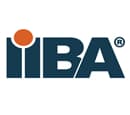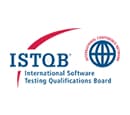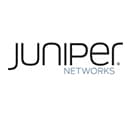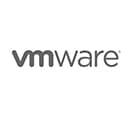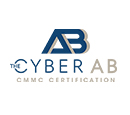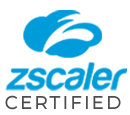Paloalto Networks NGFW-Engineer Practice Test Questions Answers
Exam Code: NGFW-Engineer
(Updated 50 Q&As with Explanation)
Exam Name: Palo Alto Networks Next-Generation Firewall Engineer
Last Update: 10-Dec-2025
Demo:
Download Demo
Questions Include:
NGFW-Engineer Overview
Palo Alto Networks NGFW‑Enginer Exam Overview
| Aspect | Details |
|---|---|
| Exam Name & Code | Palo Alto Networks Certified Next‑Generation Firewall Engineer (NGFW‑Engineer), code PAN‑S‑NGFE |
| Purpose | Validates configuration, deployment, automation, integration, and troubleshooting of Palo Alto NGFWs in enterprise environments |
| Number of Questions | 50 questions (42 single-choice, 8 multiple-choice) |
| Exam Duration | 90 minutes (plus 30-minute ESL extension if eligible) |
| Question Format | Primarily multiple-choice (single- and multiple-answer), including scenario-based items |
| Passing Score | Scaled score: 860/1000 (~86%) |
| Exam Fee | USD 250 |
| Delivery Mode | Available via PSI (online proctored or in-person) |
| Domain Coverage | • PAN‑OS Networking Configuration – 38% • PAN‑OS Device Setting Configuration – 38% • Integration & Automation – 24% |
| Target Audience | Network/security engineers and firewall admins responsible for NGFW deployment, automation, and daily operations |
| Prerequisites | Recommended: hands-on experience with PAN‑OS, firewall policies, routing, VPNs, and automation tools |
| Question/Pacing | ~1.8 minutes/question → expect ~50 questions in 90 minutes (~1 min 48 sec each) |
Paloalto Networks Related Exams
Reliable Solution To Pass NGFW-Engineer Network Security Administrator Certification Test
Our easy to learn NGFW-Engineer Palo Alto Networks Next-Generation Firewall Engineer questions and answers will prove the best help for every candidate of Paloalto Networks NGFW-Engineer exam and will award a 100% guaranteed success!
Why NGFW-Engineer Candidates Put Solution2Pass First?
Solution2Pass is ranked amongst the top NGFW-Engineer study material providers for almost all popular Network Security Administrator certification tests. Our prime concern is our clients’ satisfaction and our growing clientele is the best evidence on our commitment. You never feel frustrated preparing with Solution2Pass’s Palo Alto Networks Next-Generation Firewall Engineer guide and NGFW-Engineer dumps. Choose what best fits with needs. We assure you of an exceptional NGFW-Engineer Palo Alto Networks Next-Generation Firewall Engineer study experience that you ever desired.
A Guaranteed Paloalto Networks NGFW-Engineer Practice Test Exam PDF
Keeping in view the time constraints of the IT professionals, our experts have devised a set of immensely useful Paloalto Networks NGFW-Engineer braindumps that are packed with the vitally important information. These Paloalto Networks NGFW-Engineer dumps are formatted in easy NGFW-Engineer questions and answers in simple English so that all candidates are equally benefited with them. They won’t take much time to grasp all the Paloalto Networks NGFW-Engineer questions and you will learn all the important portions of the NGFW-Engineer Palo Alto Networks Next-Generation Firewall Engineer syllabus.
Most Reliable Paloalto Networks NGFW-Engineer Passing Test Questions Answers
A free content may be an attraction for most of you but usually such offers are just to attract people to clicking pages instead of getting something worthwhile. You need not surfing for online courses free or otherwise to equip yourself to pass NGFW-Engineer exam and waste your time and money. We offer you the most reliable Paloalto Networks NGFW-Engineer content in an affordable price with 100% Paloalto Networks NGFW-Engineer passing guarantee. You can take back your money if our product does not help you in gaining an outstanding NGFW-Engineer Palo Alto Networks Next-Generation Firewall Engineer exam success. Moreover, the registered clients can enjoy special discount code for buying our products.
Paloalto Networks NGFW-Engineer Exam Topics Breakdown
| Domain | Weight (%) | Topics Covered |
|---|---|---|
| PAN-OS Networking Configuration | 38% | - Configure and verify L2/L3 interfaces - Static and dynamic routing - NAT policies - VLANs, virtual routers, and zones |
| PAN-OS Device Setting Configuration | 38% | - Configure security policies and rules - Setup of objects, profiles, and zones - Application-ID, User-ID, and Content-ID - VPN setup (IPSec/GlobalProtect) |
| Integration and Automation | 24% | - Use of Panorama for central management - Basic use of APIs - Configure log forwarding - Integration with SIEM tools and third-party platforms |
Paloalto Networks NGFW-Engineer Network Security Administrator Practice Exam Questions and Answers
For getting a command on the real Paloalto Networks NGFW-Engineer exam format, you can try our NGFW-Engineer exam testing engine and solve as many NGFW-Engineer practice questions and answers as you can. These Paloalto Networks NGFW-Engineer practice exams will enhance your examination ability and will impart you confidence to answer all queries in the Paloalto Networks NGFW-Engineer Palo Alto Networks Next-Generation Firewall Engineer actual test. They are also helpful in revising your learning and consolidate it as well. Our Palo Alto Networks Next-Generation Firewall Engineer tests are more useful than the VCE files offered by various vendors. The reason is that most of such files are difficult to understand by the non-native candidates. Secondly, they are far more expensive than the content offered by us. Read the reviews of our worthy clients and know how wonderful our Palo Alto Networks Next-Generation Firewall Engineer dumps, NGFW-Engineer study guide and NGFW-Engineer Palo Alto Networks Next-Generation Firewall Engineer practice exams proved helpful for them in passing NGFW-Engineer exam.

